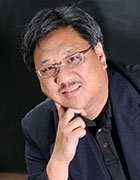
voltgroup - Fotolia
Asean countries consider IoT for smart farming
Malaysia is leading the way when it comes to using internet of things technologies to improve agriculture
Malaysia is exploring the use of internet of things (IoT) technologies for agriculture in the Asean region, driven by collaboration between government and the private sector.
Serene Chan, industry manager, ICT at Frost & Sullivan Asia Pacific, said Malaysia is leading the way in the use of IoT for agriculture in the region.
Various stakeholders have come together to develop pilot projects, said Chan, and there are ongoing R&D efforts by the research institutions that work closely with the private sector and government agencies to bring products and services to market within Malaysia and to other countries.
Malaysia is also helped by the fact that its ICT infrastructure is “highly developed” with ubiquitous connectivity to the internet provided by numerous service providers, said Chan. There is also extensive use of online devices across the consumer, enterprise and industrial sectors.
The Malaysian Institute of Microelectronic Systems (MIMOS) has created several solutions that cater to agricultural development. For example, it has developed a sensor called Mi-MSCAN TpH to collect environmental data.
MIMOS has also developed an agricultural framework that incorporates the use of IoT, which links agricultural producers, traders and suppliers together in a unified system. The framework employs technologies including a microelectromechanical systems (MEMS) wireless sensor network that captures environmental data and cloud software that automatically detects and neutralises potential threats, to create a supply chain management solution and an e-marketplace platform.
Chan said the effective use of IoT technologies in the agricultural sector can help “a highly established and mature sector in Malaysia to move up the value chain and create further value”.
The Philippines has also begun to use remote sensing to aid the country’s rice production, using satellite imagery and ground data processing to generate information on agricultural conditions.
Remote sensing technology can reveal irregularities in crops before they can affect a large volume of produce, said Enrico Paringit, programme leader at the Department of Science and Technology’s (DOST) disaster risks exposure assessment for mitigation (Dream) project.
“The El Niño phenomenon was detected using remote sensing technologies,” said Paringit.
DOST’s Dream programme will send up two microsatellites from 2016 to enable the remote transmission of data. Daily data feeds will be sent to a ground receiving station called the Philippine Earth Data Resources and Observation (Pedro) centre in Subic, Zambales.
This will initially run for two years, providing crops and climate experts with information about a particular area’s vegetation conditions.
Read more about IoT in the Asean region
- IoT deployments are in their early stages in the Asean region, but experts predict that as take-up of IoT apps increases, it will have a big impact on IT infrastructures in the region.
- IoT investments will be one of the major trends in Asean economies throughout 2016, according to predictions from Frost & Sullivan.
- The Singapore government is pitching to make the Asean city state a centre for the development of smart city and internet of things technology, and wants to bring UK startups to its shores.
It will also receive, process and distribute spatial data to provide government officials with intelligent decision-making tools in areas of concern, such as the occurrence of pests and the annual yield of rice in order to prevent production shortages.
“Just imagine – we can now determine if our rice production is sufficient by comparing our annual yield data against our needs,” said Paringit. “Through this, we can now have an empirical basis to decide if there is a real need to import rice, so we can truly help our local farmers to optimise their profits.”
Meanwhile, Thailand’s state National Electronics and Computer Technology Centre (NECTEC) is applying IT and electronics technology to build smart farms, focusing on four main agricultural products: rice, cassava, rubber and sugar cane.
The goal is to increase productivity and quality of agricultural products, in order to raise the quality of living for farmers in rural areas of Thailand.
Also, the Asian Institute of Technology (AIT) is working to realise the concept of a ‘living laboratory’ in Thailand, to demonstrate the capabilities of wireless sensor networks (WSNs) and IoT. One of its goals is a ‘smart animal farm’, which involves monitoring and controlling animal and fish farming environments to improve productivity; and ‘smart agriculture’, where IoT is used to monitor and control conditions to help increase crop yields.
Frost & Sullivan’s Chan added: “The objective of using IoT sensors is to generate competitiveness, especially in the export of Thailand’s agricultural products by providing greater transparency to exporters on where agricultural products are grown, the species of the products, freshness and other critical information to trace the source and origins.
“This was carried out by deploying RFID tags, barcodes and other sensor technologies to trace the source and to trace the destinations where there is demand for those products.”
However, Chan noted that it can be a challenge to justify the use of IoT technology for agriculture in the Asean region, because the cost of labour can be relatively low. The use of IoT in agriculture will depend on a number of enablers, such as the availability of government subsidies and usage-based payment models.









